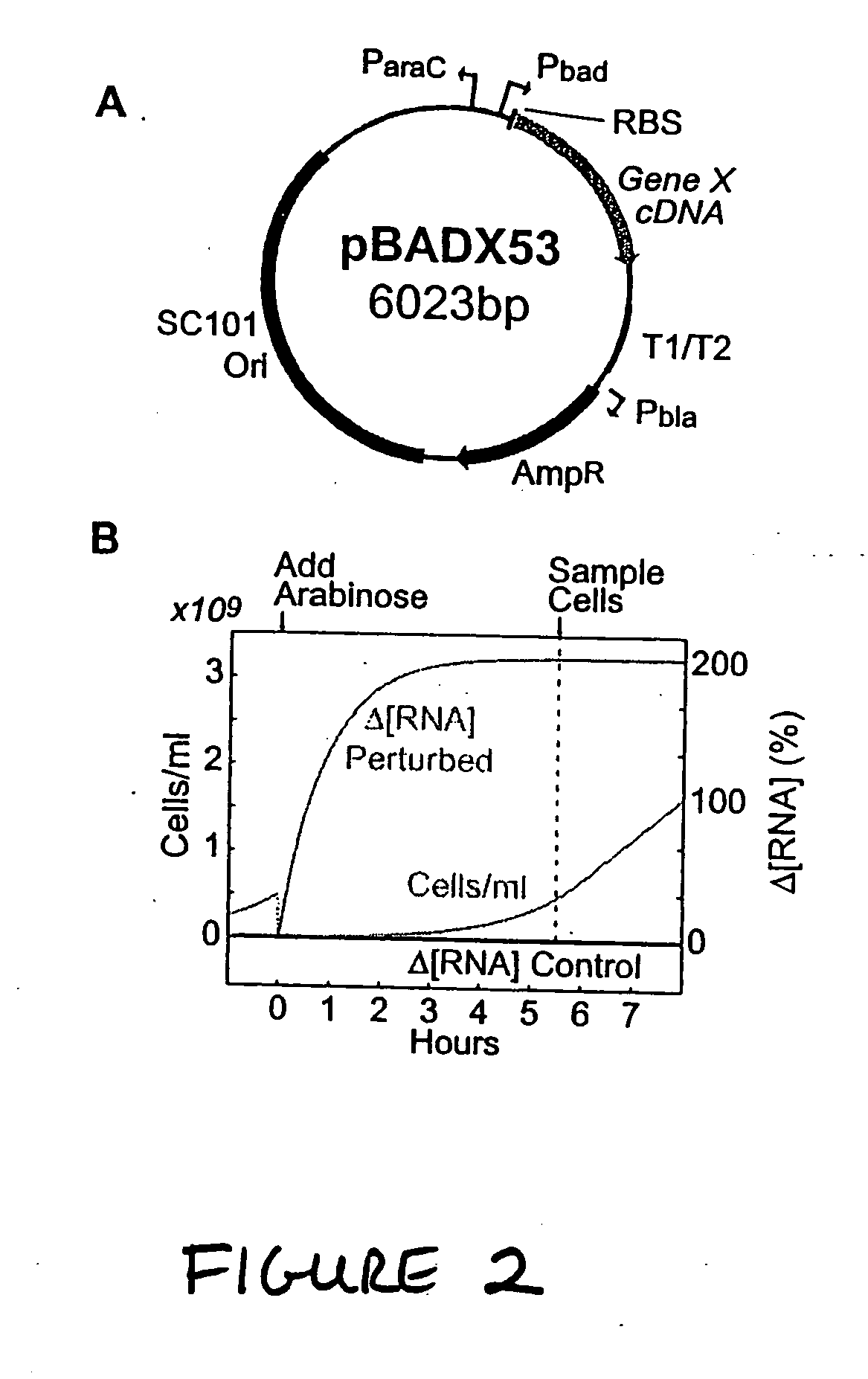Systems and methods for reverse engineering models of biological networks
a biological network and model technology, applied in the field of systems and methods for reverse engineering models of biological networks, can solve the problems of data intensive, limited functional information, and typically use little prior knowledg
- Summary
- Abstract
- Description
- Claims
- Application Information
AI Technical Summary
Benefits of technology
Problems solved by technology
Method used
Image
Examples
example 1
Constructing a Model of a Nine Gene Biological Network Using Nine Perturbations
[0307] Materials and Methods
[0308] Plasmids, strains, growth conditions, and chemicals. The pBADX53 expression plasmid was constructed by making the following modifications to the pBAD30 plasmid obtained from American Type Culture Collection (ATCC): (i) the origin of replication was replaced with the low-copy SC101 origin of replication; (ii) the araC gene was removed, leaving the araC promoter intact; (iii) the ribosome binding site from the Pbad promoter in the pBAD18s (ATCC) plasmid was inserted for use with the luciferase gene in control cells; and (iv) an n-myc DNA fragment was inserted upstream of the rrn T1 / T2 transcription terminators to provide an alternative unique priming site for real-time PCR. Plasmids were constructed using basic molecular cloning techniques described in standard cloning manuals (1, 2). Copies of all transcripts in the SOS test network were obtained by PCR amplification of...
example 2
Constructing and Testing a Model of a Nine Gene Biological Network Using Seven Perturbations
[0330] We also tested the performance of the inventive methods using an incomplete training set consisting of perturbations to only 7 of the 9 genes (i.e., data for perturbations to lexA and recA was not included). We recovered network models using all 36 combinations of 7 perturbations and found that the methods performed comparably to simulations, albeit with slightly reduced performance (in terms of the number of false positives at various noise levels) than the full nine-perturbation training set, as illustrated in the insets in FIG. 3. These results demonstrate the ability of the inventive methods to accurately construct models of biological networks without requiring perturbation of each biochemical species in the network.
example 3
Performing Sensitivity Analysis Using the Model
[0331] We examined whether the first-order model recovered as described in Example 1 could be used to determine the sensitivity of the activities of one or more biological species in the network to changes in the activities of one or more species (i.e., to determine the sensitivity of species to other species). In particular, we sought to identify the major regulators of SOS response in the test network. We considered major regulators to be those transcripts that, when perturbed, cause largest relative changes in expression of the other genes in the network. In other words, the species (transcripts, and thus the corresponding genes) to which the activities of other species were most sensitive in response to a perturbation were considered to be major regulators. To this end, we examined the gain matrix, G={tilde over (W)}−1, as described above. Each column of the gain matrix describes the response of all transcripts in the network to a ...
PUM
 Login to View More
Login to View More Abstract
Description
Claims
Application Information
 Login to View More
Login to View More - R&D
- Intellectual Property
- Life Sciences
- Materials
- Tech Scout
- Unparalleled Data Quality
- Higher Quality Content
- 60% Fewer Hallucinations
Browse by: Latest US Patents, China's latest patents, Technical Efficacy Thesaurus, Application Domain, Technology Topic, Popular Technical Reports.
© 2025 PatSnap. All rights reserved.Legal|Privacy policy|Modern Slavery Act Transparency Statement|Sitemap|About US| Contact US: help@patsnap.com



